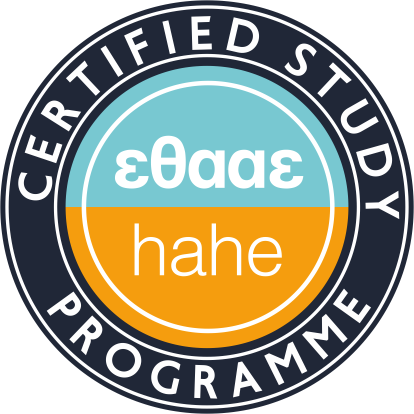After completing the course, it is expected that students will be able to: understand the way in which the international economic system works, interpret the causes and dynamics that shape transactions, commercial relations and economic balances in the international and world space, to know the main determinants of exchange rates, to understand the relationship between exchange rate and Balance of Payments, to interpret and analyze the functioning of closed and open economies, to distinguish the consequences of currency depreciation on a country's trade balance, to evaluate the effectiveness of monetary and fiscal policy in different exchange rate systems, manage issues of exchange rates, balance of payments and international capital movements, know the context and conduct of international trade and mobility of factors of production in the prosperity of countries, the role of international organizations in the conduct of commercial and international transactions, to interpret phenomena of commercial and economic associations, to describe and analyze the reasons for entering into international trade relations, to recognize the comparative advantages and disadvantages of countries in international trade, the effects of the liberalization of international trade on labor markets and on distribution of income, to be familiar with the spirit of legislation and the spirit of policies related to international trade and commerce and generally to cultivate their critical, inductive and creative thinking on theoretical and practical issues concerning the international economic system
Η βασική βιβλιογραφία που θα χρησιμοποιηθεί είναι
Ελληνόγλωσση Βιβλιογραφία
- Krugman, P., and Obstfeld, M., Melitz, M.J., (2016) Διεθνής Οικονομική Θεωρία και Πολιτική, Κωστελέτου Ν. (Επ.), Κριτική.
- Μακροοικονομική της Παγκόσμιας Οικονομίας του Κ. Ι. Καρφάκη, Εκδόσεις Τζιόλα.
- Feenstra R.C., and Taylor, M.A., (2014) Διεθνής Οικονομική, Νίκας Χ., Ασημακοπούλουν Δ. (Επ.) Εκδόσεις Επίκεντρο
Ξενόγλωσση Βιβλιογραφία
- Gandolfo, G. (2013). International trade theory and policy. Springer Science & Business Media.
- Trebilcock, M., Howse, R., & Eliason, A. (2005). The regulation of international trade. Routledge.
- Feenstra, R. C. (2015). Advanced international trade: theory and evidence. Princeton university press.
- Folsom, R. H., Gordon, M. W., Spanogle, J. A., Fitzgerald, P. L., & Van Alstine, M. P. (2012). International business transactions: a problem-oriented coursebook. ThomsonReuters.
- Salvatore, D. (2012). Introduction to international economics. Hoboken, NJ: Wiley.
Ενδεικτική Αρθρογραφία
- Freund, C. L., & Weinhold, D. (2004). The effect of the Internet on international trade. Journal of international economics, 62(1), 171-189.
- Davidson, W. H., & McFetridge, D. G. (1984). International technology transactions and the theory of the firm. The journal of industrial economics, 253-264.
- Ruggie, J. G. (1982). International regimes, transactions, and change: embedded liberalism in the postwar economic order. International organization, 36(2), 379-415.
- Klein, S. (1989). A transaction cost explanation of vertical control in international markets. Journal of the Academy of Marketing Science, 17(3), 253-260.
- Brams, S. J. (1966). Transaction flows in the international system. American Political Science Review, 60(4), 880-898.
- Davidson, W. H., & McFetridge, D. G. (1984). International technology transactions and the theory of the firm. The journal of industrial economics, 253-264.
- Hennart, J. F. (2010). Transaction cost theory and international business. Journal of Retailing, 86(3), 257-269.
- Bernard, A. B., Jensen, J. B., Redding, S. J., & Schott, P. K. (2007). Firms in international trade. Journal of Economic perspectives, 21(3), 105-130.
- Shutters, S. T., & Muneepeerakul, R. (2012). Agricultural trade networks and patterns of economic development. PloS one, 7(7), e39756.
- Vidya, C. T., & Prabheesh, K. P. (2020). Implications of COVID-19 pandemic on the global trade networks. Emerging Markets Finance and Trade, 56(10), 2408-2421.
- Kalemli‐Ozcan, S., Papaioannou, E., & Peydro, J. L. (2013). Financial regulation, financial globalization, and the synchronization of economic activity. The Journal of Finance, 68(3), 1179-1228.
- Samimi, P., & Jenatabadi, H. S. (2014). Globalization and economic growth: Empirical evidence on the role of complementarities. PloS one, 9(4), e87824.
- Farhi, E., & Maggiori, M. (2018). A model of the international monetary system. The Quarterly Journal of Economics, 133(1), 295-355.
- Coeurdacier, N., & Guibaud, S. (2011). International portfolio diversification is better than you think. Journal of international money and finance, 30(2), 289-308.
- Patel, P. J., Patel, N. J., & Patel, A. R. (2014). Factors affecting currency exchange rate, economical formulas and prediction models. International Journal of Application or Innovation in Engineering & Management (IJAIEM), 3(3), 53-56.
- Karpiarz, M., Fronczak, P., & Fronczak, A. (2014). International trade network: fractal properties and globalization puzzle. Physical review letters, 113(24), 248701.
- Kostoska, O., Mitikj, S., Jovanovski, P., & Kocarev, L. (2020). Core-periphery structure in sectoral international trade networks: A new approach to an old theory. PloS one, 15(4), e0229547.
- Kennan, J., & Riezman, R. (2013). Do big countries win tariff wars?. In International trade agreements and political economy (pp. 45-51).
- Uy, T., Yi, K. M., & Zhang, J. (2013). Structural change in an open economy. Journal of Monetary Economics, 60(6), 667-682.
- De Blas, B., & Russ, K. N. (2015). Understanding markups in the open economy. American Economic Journal: Macroeconomics, 7(2), 157-80.
- Lewer, J. J., & Van den Berg, H. (2007). Religion and international trade: does the sharing of a religious culture facilitate the formation of trade networks?. American Journal of Economics and Sociology, 66(4), 765-794.
Άλλη σχετική ενδεικτική βιβλιογραφία
- Krugman, P. (1994). Rethinking international trade. MIT press.
- Ohlin, B. (1935). Interregional and international trade. Harvard University Press, Cambridge.
- Hertel, T. W. (1997). Global trade analysis: modeling and applications. Cambridge university press.
- Leamer, E. E., & Levinsohn, J. (1995). International trade theory: the evidence. Handbook of international economics, 3, 1339-1394.
- Morgenstern, O. (1959). International financial transactions and business cycles (Vol. 8). Princeton: Princeton University Press.
- Baker, H. K., & Filbeck, G. (Eds.). (2013). Portfolio theory and management. Oxford University Press.
- Borchert, I., Gootiiz, B., & Mattoo, A. (2014). Policy barriers to international trade in services: evidence from a new database. The World Bank Economic Review, 28(1), 162-188.
- Gandolfo, G., & Gandolfo, G. (1998). International trade theory and policy (pp. 418-419). Berlin: Springer.
- Stiglitz, J. (2017). Towards a broader view of competition policy. Competition Policy for the New Era: Insights from the BRICS countries, 270, 270.
- Haltiwanger, J. (2011). Globalization and economic volatility. Making globalization socially sustainable, 119-146.
Συναφή επιστημονικά περιοδικά
Journal of International Trade and Economic Development (Routledge)
International Trade Journal (Taylor & Francis)
World Trade Review (Cambridge University Press)
Journal of International Trade Law and Policy (Emerald)
Journal of Industry, Competition, and Trade (Kluwer)
Journal of World Trade (Kluwer Law International) Journal of Chinese Economic and Foreign Trade Studies (Emerald)

